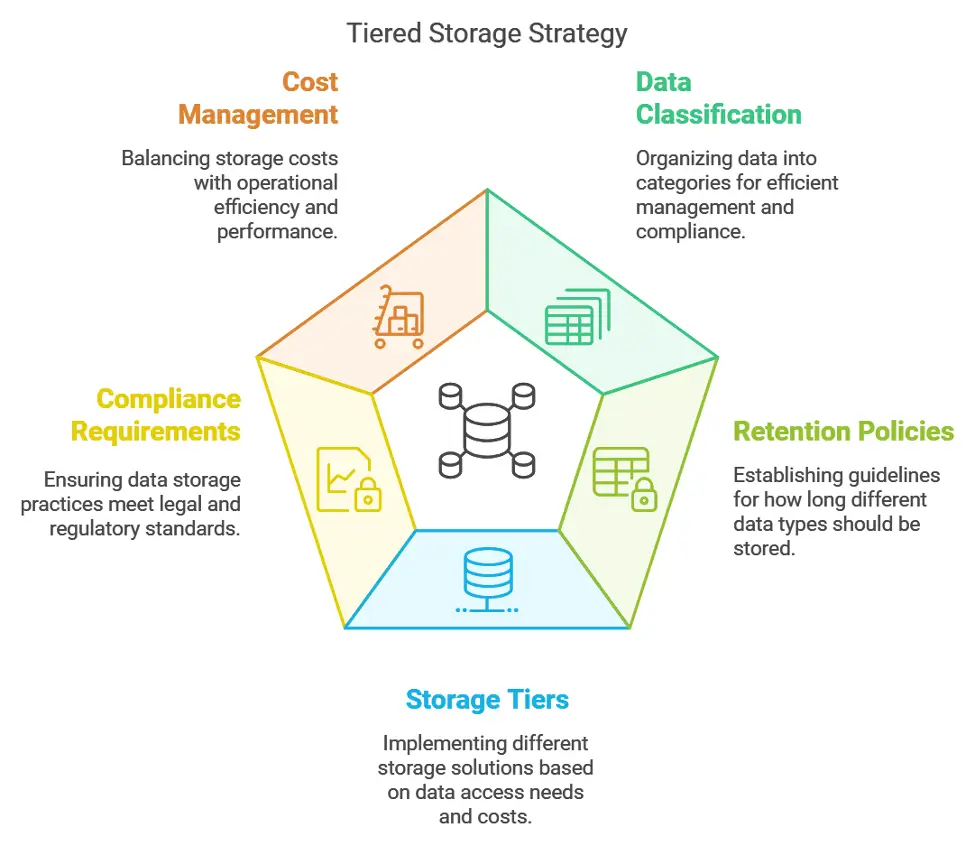The Strategic Imperative of Financial Records Management in Modern Enterprises
In an era where data volumes are exploding exponentially, enterprises face a critical challenge: how to effectively manage and store financial records while maintaining system performance and ensuring regulatory compliance. The traditional approach of keeping all financial data in production systems is becoming increasingly unsustainable, forcing organizations to rethink their information lifecycle management (ILM) strategies.
Financial records, from daily transactions to quarterly statements, form the backbone of enterprise operations. While current records naturally reside in production systems for immediate access and processing, the long-term storage of historical data presents significant challenges. Production databases, optimized for transactional processing and real-time reporting, can become bloated and sluggish when handling years or decades of historical data.
The regulatory landscape adds another layer of complexity to this challenge. The Sarbanes-Oxley Act mandates that public companies retain audit records for seven years, while the Internal Revenue Service requires businesses to keep tax records for a minimum of three years. The Securities and Exchange Commission goes further, requiring broker-dealers to maintain certain records for up to six years, with the first two years in an easily accessible place.
Leading organizations are adopting a tiered storage approach that balances performance, compliance, and cost. Organizations must carefully consider data classification, retention policies, and retrieval requirements. Financial records often contain sensitive information and must maintain their integrity and chain of custody throughout their lifecycle.
Current financial records and those needed for immediate business operations remain in high-performance production systems. Data from previous fiscal years, still subject to regular audit or compliance requirements, moves to near-line storage systems that offer good performance at a lower cost. Finally, historical records required purely for compliance purposes transition to long-term storage solutions, such as cloud-based archival services. SOLIXCloud Enterprise Data Archiving Solution | Manage Growth.
The key to success lies in implementing a comprehensive information lifecycle management strategy. This should include clear policies for data classification, retention periods, and storage tiers. Organizations must also consider the technical aspects of data migration, including maintaining data relationships, ensuring accessibility for audits, and implementing robust backup and recovery procedures.
Looking ahead, artificial intelligence and machine learning technologies are emerging as powerful tools for intelligent data lifecycle management. These technologies can analyze usage patterns, automatically classify records, and optimize storage placement based on business rules and compliance requirements. Some organizations are experimenting with blockchain technology to ensure the immutability and traceability of critical financial records.
The cost implications of different storage strategies cannot be ignored. While maintaining all records in production systems might seem simpler, it’s often the most expensive approach. A well-implemented tiered storage strategy can reduce total cost of ownership by 40-60% while improving system performance and maintaining compliance. Organizations must carefully balance these factors against the operational overhead of managing multiple storage tiers.
The most effective approach to storing financial records in enterprise systems is a carefully planned, tiered strategy that aligns with both business needs and compliance requirements. As data volumes continue to grow and regulatory requirements evolve, organizations must remain flexible and adapt their storage strategies accordingly. The future belongs to those who can effectively leverage new technologies while maintaining the delicate balance between accessibility, compliance, and cost-effectiveness.
Stephen Tallant
As the Director of Product Marketing at Solix Technologies, I lead the development and communication of the product and solution story to the market. I have over 25 years of experience in product marketing and product management, creating engaging messaging, launch plans, collateral, and content for various software solutions. I live in metro Philadelphia, and am a big sports fan - so much so, I sit on the Board of the Philadelphia Sports Hall of Fame. I attended Villanova University for both my undergraduate and graduate degrees.

